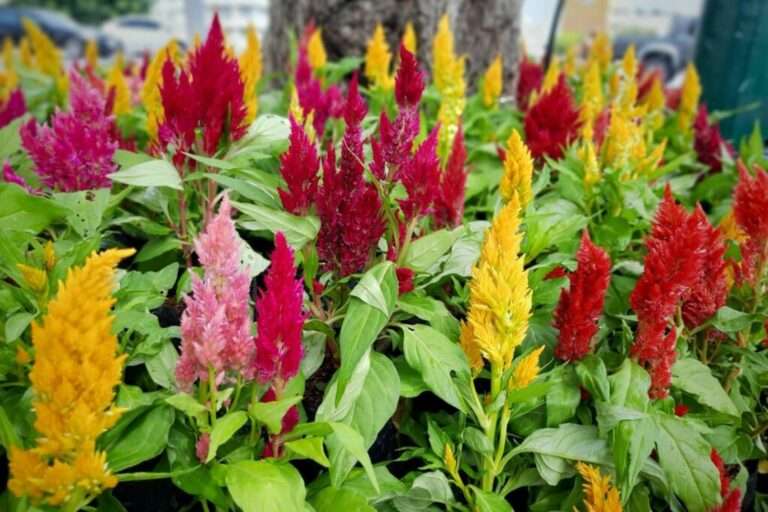
The annual flower celosia is known for its silky blossoms, which come in a variety of shapes, sizes, and colors.
On top of its green or reddish leaves, the celosia offers substantial flower clusters. Yellow, gold, red, orange, pink, and wine are some of the colors. Some are fashioned like spikes or plumes, while velvety crested forms (cockscomb) are rippling. Height can be anywhere between 6 and 36 inches, and blossom size is independent of height.
Uses:
Employ smaller varieties as edging and in containers. For usage as cut or dried flowers, mass tall types in borders or grow them in garden rows. Choose flowers for drying before they fully open, then hang them upside down in a cool, dark location.
Celosia Care Tips

Light
Celosia plants require full sun exposure for at least eight hours each day.
Rich, well-drained soil with moderate watering is ideal for celosia growth. Ideal soil has a pH between 6.6 and 6.7 and has a high organic content.
Temperature and Humidity
When the temperature dips into the 40s, celosia plants, which adore the heat, perish. They prefer high humidity levels, up to 90% in the summer.
Fertilizer
When planting, use a general-purpose fertilizer. After planting, apply a fertilizer that contains more phosphorus than nitrogen monthly.
Pruning
The flower remains on the shrub until it has dried. In order to maintain the plants appearing appealing and healthy, they must be manually removed.
Pests and Problems
Celosias are generally hardy plants with few issues. Aphids and spider mites are a couple of bugs to watch out for (the latter can be a problem in hot, dry weather).
Be gentle with these plants because their succulent stems are brittle and prone to breaking.
How to Propagate Celosia
Growing a variety of celosia adds a burst of color to your garden beds and is simple to do from seed or cuttings. Make sure to choose plants with the suitable size when choosing your variety. Certain types, which are planted primarily for cut flowers, have the potential to grow extremely large and need staking. There aren’t any seeds available for many new kinds because they can only be obtained as cuttings.
Table





